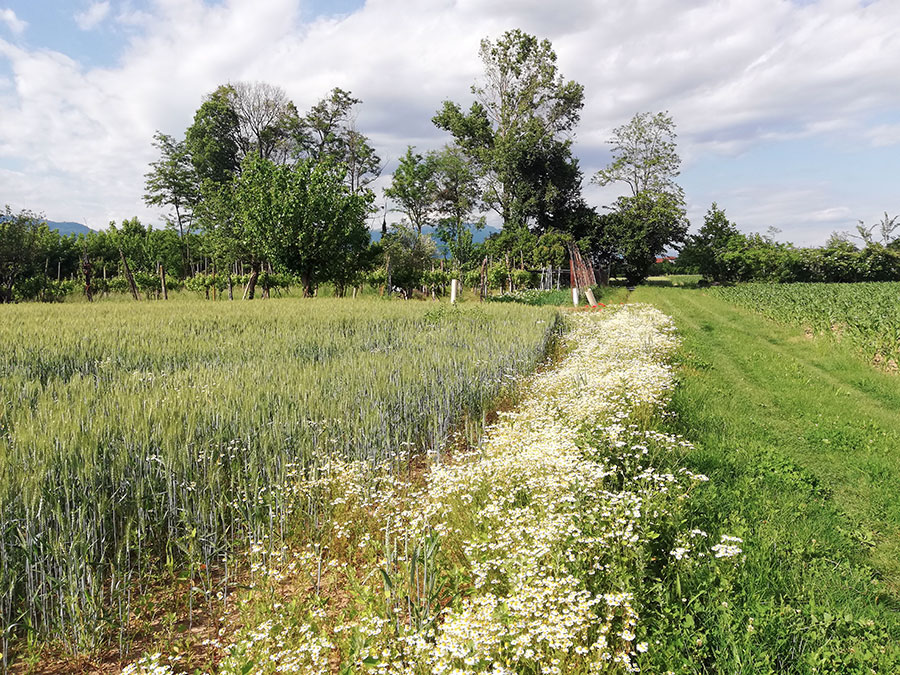Life PollinAction
Green Infrastructure (GI)
According to the Communication from the European Community n. 249 of 6 May 2013 “Green Infrastructure (GI) – Enhancing Europe’s Natural Capital” (EU-EC, 2013), Green Infrastructure is defined as “a strategically planned network of natural and semi-natural areas with other environmental features designed and managed to deliver a wide range of ecosystem services. It incorporates green spaces (or blue if aquatic ecosystems are concerned) and other physical features in terrestrial (including coastal) and marine areas. On land, GI is present in rural and urban settings”.
At the local level these “networks” can be made up of a set of elements of different size and level of environmental quality: therefore, not only Natural Parks and protected areas, or areas with high nature value, but also small woods, wetlands, water bodies, hedges, meadows, extensive agricultural areas, large gardens. These components interact with each other to create a system, a network, able to accomplish different functions and provide multiple benefits to the population, especially if located in an urban and peri-urban environment, where most people live, and population density is higher.
In contrast to mainstream “grey” infrastructure approaches that serve a single objective, GI promotes “multifunctionality”, i.e., the same area can serve multiple functions and provide multiple benefits if its ecosystems are in a healthy state. More specifically, GI aims to enhance nature’s capacity to deliver a wide range of valuable Ecosystem Goods and Services. The creation of GI, therefore, increases the quality and functionality of the territory, with positive effects also from an economic point of view: both for the prevention and reduction of damage and restoration costs deriving from hydrogeological and environmental instability, and for the activities and investments that they are able to activate, strengthen and ensure over time.
This strategy aims at promoting a more sustainable and resource-efficient development process by encouraging the use of Europe’s limited space in a coherent, smart, and integrated way.
In this regard, the European Community gives some examples.
Using nature instead of air conditioning and…saving money.
Inner city areas are often warmer than their surroundings due to lower humidity because of the absence of vegetation and the increased absorption of energy from the sun caused by dark asphalted or concrete surfaces. This phenomenon is known as the “urban heat island effect” and can have serious consequences, particularly during heat waves, for the health of vulnerable groups of people, such as those who are chronically ill or the elderly. The moist air nature provides for free could be artificially recreated using electricity to evaporate water, but it is estimated that this would cost around EUR 500,000 €/hectare. Working with nature and using GI in an urban environment, for example by incorporating biodiversity-rich parks, green spaces and fresh air corridors, can help mitigate the urban heat island effect.
GI and climate change mitigation and adaptation.
An example of the many benefits of restoring natural capital is the ecological restoration of floodplain forests. Properly functioning floodplain forests can deliver many benefits, such as filtering water, maintaining the water table and preventing erosion. The main processes through which the forest interacts with precipitation are the interception of precipitation at the level of the foliage, that is, the ability of the crowns of the trees to capture a part of the precipitation before it reaches the ground and then to make it flow along the branches and stems, and the absorption or infiltration at ground level, that is, the share of precipitation that penetrates the soil. The water that escapes interception and infiltration into the soil is responsible for erosion and, above all, flood waves.
Woods and riparian vegetation play, therefore, a key role during flood events: they increase the roughness, that is the resistance that the water meets flowing and therefore protect the banks from erosion, slow down the speed of the flow and trap sediments and materials transported by the current.
The forest also mitigates climate change effects by storing CO2. Restoring floodplain forests is often cheaper in terms of one-off and maintenance costs than purely technical (grey) solutions such as building dams and floodplain reservoirs. Since restoration measures for the floodplain forests also re-connect the river with the adjoining floodplain, they ensure connectivity for species such as the otter and rare fish and bird species.
Green Infrastructure in the LIFE PollinAction Project
The Life PollinAction Project supports plants and pollinators by creating a Green Infrastructure, i.e., a network of habitats, such as small woodlands, hedges, and meadows, where plants and animals can spread and move around, seek shelter and find the resources they need to survive. Bringing nature back into our urban and rural areas will benefit wildlife while improving our quality of life.
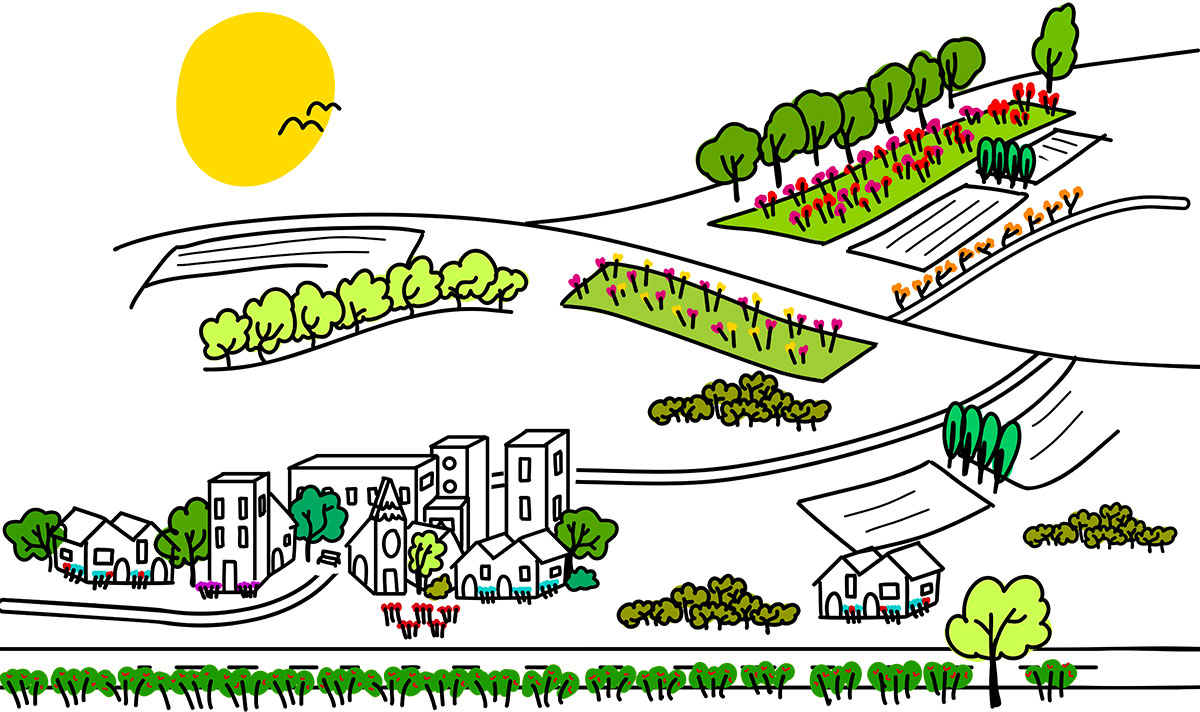
SHRUB ASSEMBLAGES
For pollinators, the small patches of bushes are the best habitats to reproduce and survive during the winter months; these areas are very important because they provide food resources (nectar and pollen) in early spring when the other species are not yet in bloom.
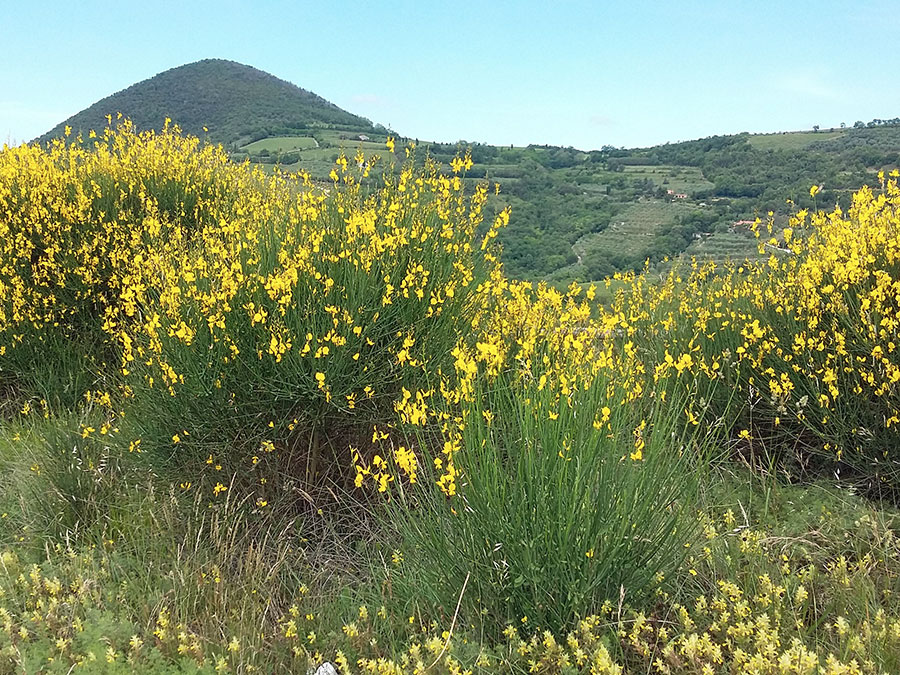
FIELD HEDGES
Hedges offer pollinators shelter and food resources and allow plants and animals to move about and spread. They also have other important functions: they reduce the intensity of wind, improve the local climate, regulate and purify wastewater, and stabilize the banks of the canals.
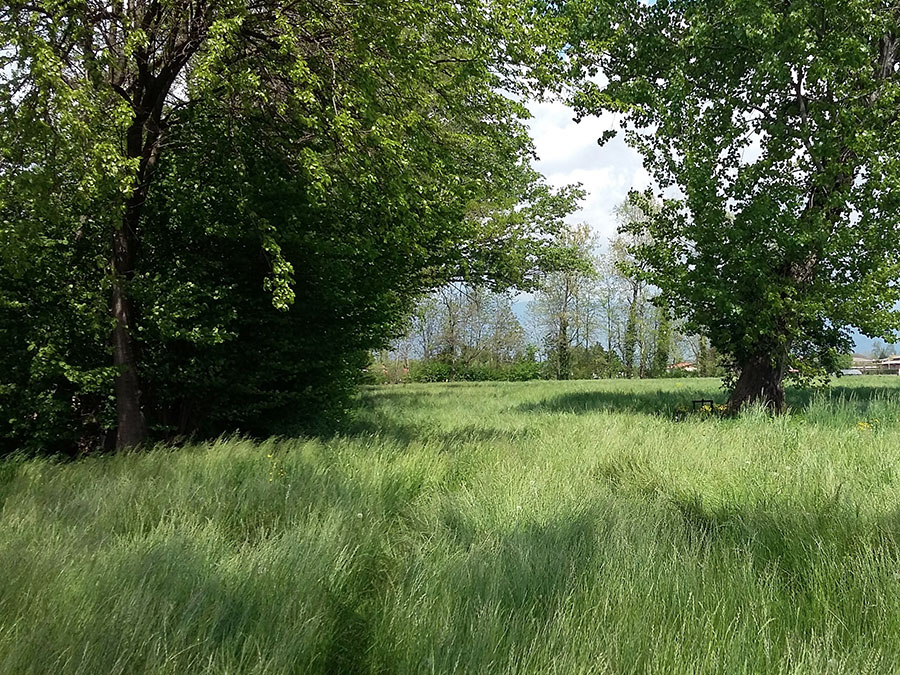
SPECIES-RICH MEADOWS
Species-rich meadows were once a very common habitat in the agricultural landscape; intensive agriculture has reduced their surface area and impoverished them in species. However, they are a habitat of fundamental importance for pollinators. The abundance and diversity of flowers, with different shapes, colors and flowering periods, attracts and supports a great variety of pollinators. It is a mutually beneficial relationship that ensures the survival of both plants and insects.
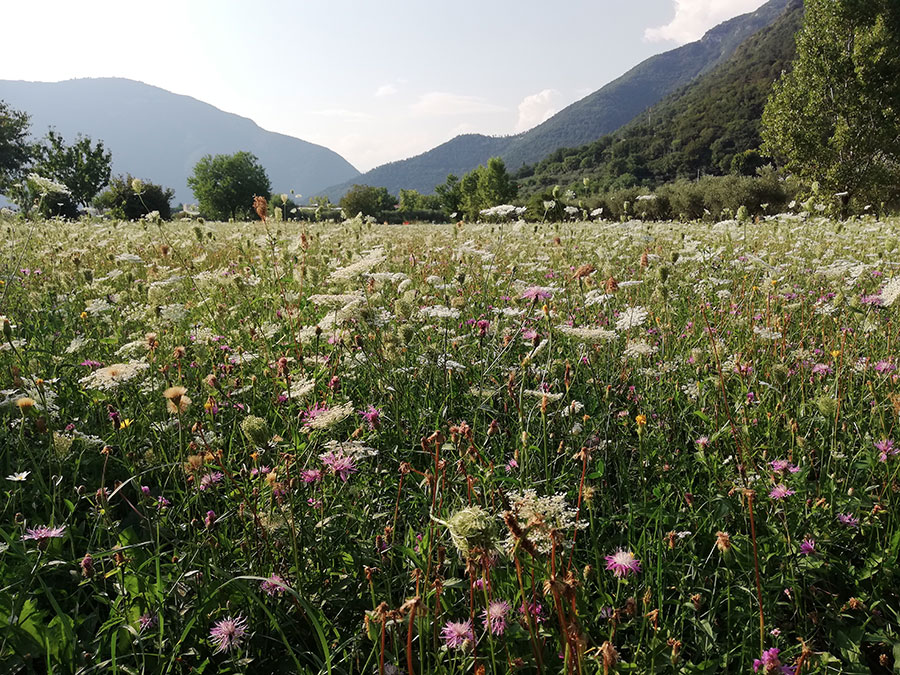
FLOWER STRIPS
In our heavily transformed landscapes, any small area along the streets, at the foot of a wall or a gate in gardens and parks, on the edge of cultivated fields or ditches and canals, can become a precious oasis for natural plants and pollinators. The species of the strips are often the same as those of the meadows, put together in order to guarantee resources and food to pollinators for the entire duration of their period of activity.
